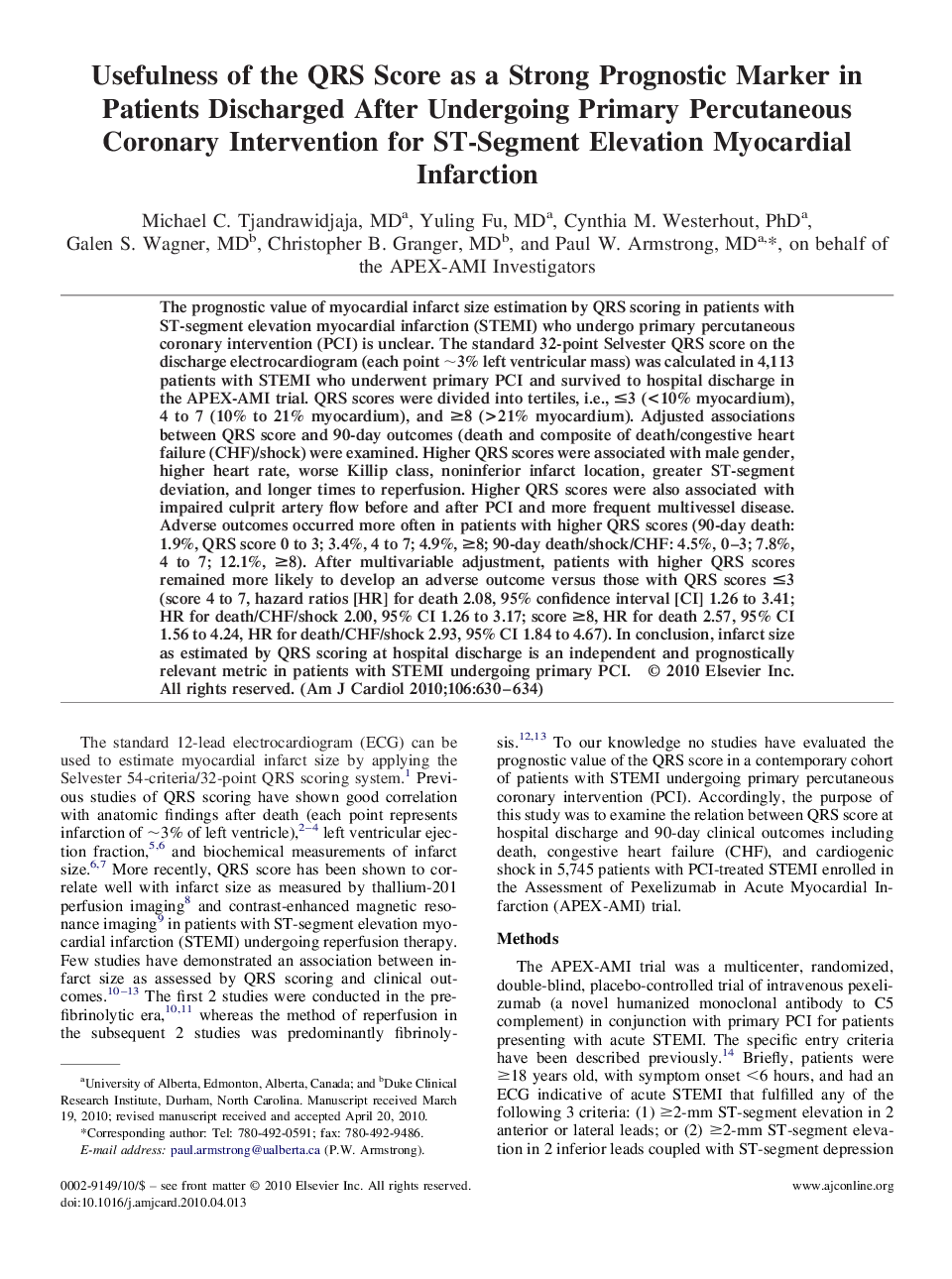| کد مقاله | کد نشریه | سال انتشار | مقاله انگلیسی | نسخه تمام متن |
|---|---|---|---|---|
| 2857128 | 1572265 | 2010 | 5 صفحه PDF | دانلود رایگان |

The prognostic value of myocardial infarct size estimation by QRS scoring in patients with ST-segment elevation myocardial infarction (STEMI) who undergo primary percutaneous coronary intervention (PCI) is unclear. The standard 32-point Selvester QRS score on the discharge electrocardiogram (each point ∼3% left ventricular mass) was calculated in 4,113 patients with STEMI who underwent primary PCI and survived to hospital discharge in the APEX-AMI trial. QRS scores were divided into tertiles, i.e., ≤3 (<10% myocardium), 4 to 7 (10% to 21% myocardium), and ≥8 (>21% myocardium). Adjusted associations between QRS score and 90-day outcomes (death and composite of death/congestive heart failure (CHF)/shock) were examined. Higher QRS scores were associated with male gender, higher heart rate, worse Killip class, noninferior infarct location, greater ST-segment deviation, and longer times to reperfusion. Higher QRS scores were also associated with impaired culprit artery flow before and after PCI and more frequent multivessel disease. Adverse outcomes occurred more often in patients with higher QRS scores (90-day death: 1.9%, QRS score 0 to 3; 3.4%, 4 to 7; 4.9%, ≥8; 90-day death/shock/CHF: 4.5%, 0–3; 7.8%, 4 to 7; 12.1%, ≥8). After multivariable adjustment, patients with higher QRS scores remained more likely to develop an adverse outcome versus those with QRS scores ≤3 (score 4 to 7, hazard ratios [HR] for death 2.08, 95% confidence interval [CI] 1.26 to 3.41; HR for death/CHF/shock 2.00, 95% CI 1.26 to 3.17; score ≥8, HR for death 2.57, 95% CI 1.56 to 4.24, HR for death/CHF/shock 2.93, 95% CI 1.84 to 4.67). In conclusion, infarct size as estimated by QRS scoring at hospital discharge is an independent and prognostically relevant metric in patients with STEMI undergoing primary PCI.
Journal: The American Journal of Cardiology - Volume 106, Issue 5, 1 September 2010, Pages 630–634